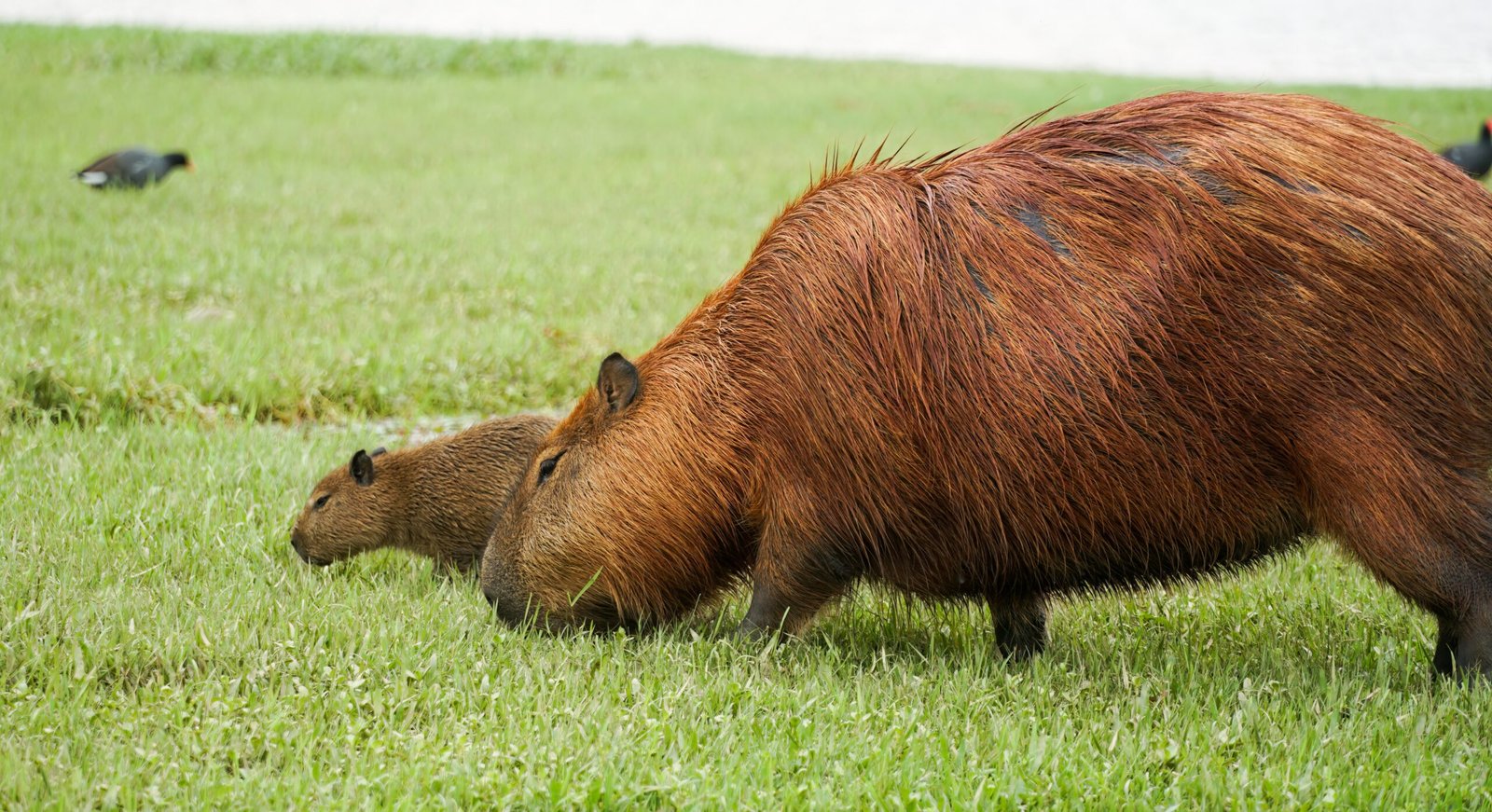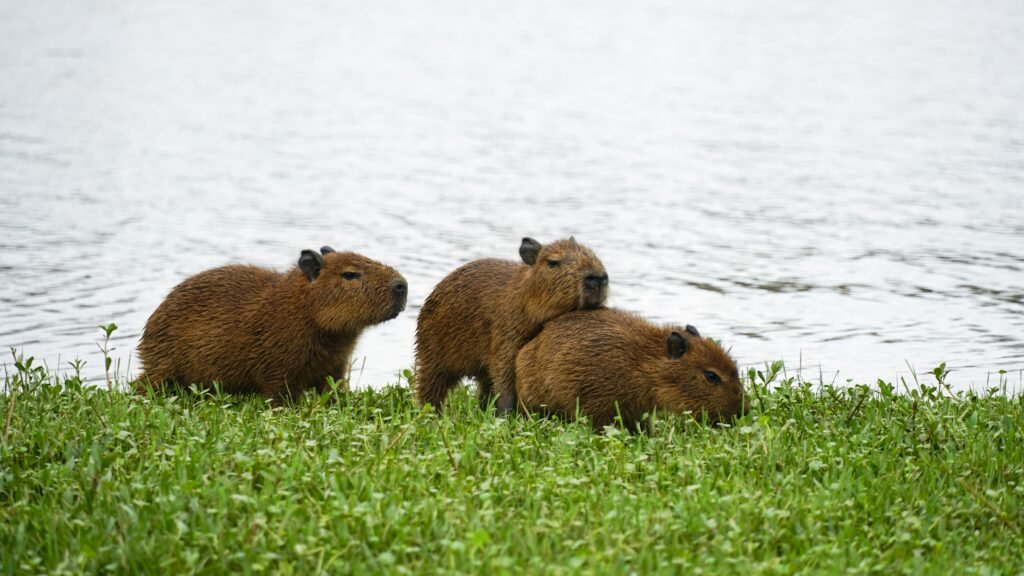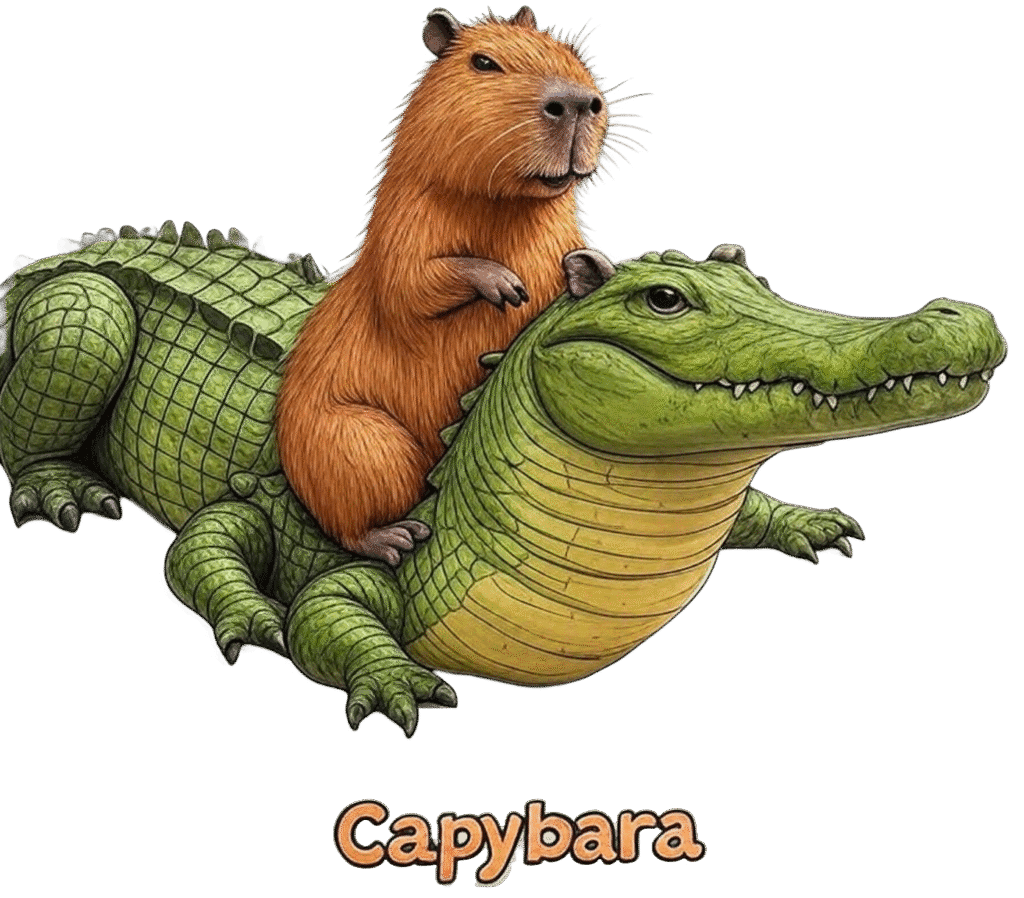The "Master of the Grasses": Unpacking the Unique Life of the Capybara
Updated August 8, 2025
When you think of the world’s largest rodent, a few things probably come to mind: a chill, semi-aquatic animal, a social butterfly, and a fan-favorite on the internet. But there’s a fascinating, and often overlooked, aspect of the capybara’s identity that gets to the very heart of its existence: its name. “Capybara” comes from the Guarani word “ka’apiuara,” which translates to “master of the grasses.” This isn’t just a fun fact; it’s a perfect description of a creature whose entire life, from its physical body to its social habits, revolves around its grassy, wetland habitat.
In this detailed blog post, we’ll dive deep into the life of the capybara, exploring why it truly deserves the title “master of the grasses.” We’ll look at its unique biology, its dietary habits, and how its social structure and ecological role are all shaped by the abundant vegetation of its South American home.

Capybara Biology: Built for the Grasslands
The capybara (scientific name: Hydrochoerus hydrochaeris) is an animal perfectly engineered for its environment. As the largest rodent in the world, these impressive creatures can weigh up to 145 lbs (and sometimes more!) and measure up to 4 feet in length. They are closely related to guinea pigs and rock cavies, a family lineage that is evident in their large, blunt heads and stout bodies.
One of the most defining features of the capybara is its set of continuously growing incisors. Like other rodents, these teeth never stop growing, which means the capybara must constantly chew and grind them down on tough, fibrous materials. This brings us back to their core diet: grass. Their incisors are perfectly suited for cropping vast quantities of grass, ensuring their teeth stay at a manageable length.
Another key biological feature is their semi-aquatic nature. They are not just found near water; they require it for survival. With their high-set eyes, ears, and nostrils, they can remain almost completely submerged, a crucial tactic for evading predators like jaguars, anacondas, and caimans. Their partially webbed feet make them excellent swimmers, allowing for swift escapes and easy movement through marshy areas. The skin secretes a special oil that provides natural sun protection, an essential feature for an animal that spends a significant amount of its time basking in the sun by the water’s edge.
The Diet of a Master: More Than Just a Grazer
Calling the capybara a “master of the grasses” is an understatement. It’s not just what they eat, but how they eat that makes them so successful. As strict herbivores, their diet consists primarily of grasses and aquatic plants. They are selective feeders, but their physiological flexibility allows them to adapt their diet to a wider variety of plants during the dry season when their preferred foods are less available.
Their digestive system is a marvel of adaptation. They practice a behavior called autocoprophagy, which is the act of eating their own feces. This might sound strange, but it’s a brilliant survival strategy. By re-ingesting their waste, they are able to extract maximum protein and vitamins from the tough cellulose of their diet and replenish the essential gut flora needed for digestion. This remarkable ability, along with the fact that their small intestine physically grows to absorb more nutrients when food is less nutritious, is a testament to the capybara’s resilience.
This dietary prowess highlights a fascinating contrast to their often-perceived “chill” nature. The capybara’s life is a constant, strategic effort to acquire and process the nutrients it needs from a simple, yet abundant, food source.
Social Dynamics: Safety in Numbers

The capybara is a gregarious and highly social animal. In the wild, they live in groups of 10 to 20 individuals, although larger aggregations of up to 100 or more can form around dwindling water sources during the dry season. This group living is a direct response to the pressures of their environment, particularly the threat of predators. A solitary capybara is a rare sight and a vulnerable one.
The social structure is built around a dominant male, several females, and their young. Group cohesion is a critical survival strategy. When a capybara spots a threat, it lets out a distinctive bark, which alerts the entire group. This warning often triggers a synchronized rush into the safety of the water. This “safety in numbers” approach is a direct manifestation of how their biology and environment have shaped their behavior.
Their communication goes beyond simple alarm barks. They use a sophisticated system of vocalizations, including whistles, purrs, and clicks, to stay connected. Scent communication is also vital. Males have a special gland on their snout, called a morillo, which secretes a substance that they rub on trees and grasses to mark their territory and signal their status. This complex communication system reinforces their social bonds and helps them navigate the challenges of group living in the wild.
Capybaras as Ecosystem Engineers
The impact of capybaras on their environment is so significant that they are considered “ecosystem engineers.” Their grazing habits play a crucial role in shaping the plant communities of their wetland habitats. By keeping certain types of vegetation in check, they allow for a greater diversity of plant life to flourish.
The paths they create through thick grasses also serve a purpose. These channels can regulate water flow and create new pathways for other wildlife, showcasing the importance of their size and diet in maintaining a healthy ecosystem. Furthermore, their droppings act as a natural fertilizer, enriching the soil and promoting new plant growth. The capybara’s life is a cycle of grazing, fertilizing, and shaping the very landscape that supports it.
The Capybara’s Cultural Impact
It’s no surprise that such a unique and charming animal has captured the hearts of people around the world. The capybara’s calm and friendly demeanor, often seen in images and gifs of them peacefully coexisting with other animals, has earned them the reputation of being the “chillest animal.” They are a popular subject for cartoons, drawings, and memes.
Their popularity has led to the rise of capybara cafes, particularly in places like Japan and Tokyo, where people can pay to interact with them. This growing interest has also made “capybara as a pet” a common search query, though it’s important to remember the immense commitment required for their care, as outlined in our previous discussions. The capybara is truly an animal with a unique blend of wild resilience and a modern, cute appeal.
From its name to its nature, the capybara is a true “master of the grasses.” Its biology, diet, social structure, and ecological role are all deeply intertwined with the grassy wetlands of its South American home. It is a testament to the power of evolution, where every trait, from its continuously growing teeth to its social barks, works in harmony to ensure its survival and success.
For more information and fun facts about capybaras, including their life span, their funny noises, and their role in their habitat, you can explore various reliable sources online. You can also find an array of capybara gifts, from plush dolls and keychains to stickers and art. Whether you’re looking for capybara images, videos of them in a hot spring, or a capybara coloring page, the internet is full of content celebrating this incredible animal.
